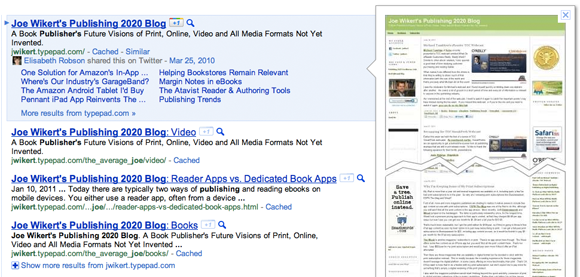This is part of an ongoing series suggesting ways to spark mobile disruption. We’ll be featuring additional material in the weeks ahead.
As the mobile space increasingly connects the real and virtual worlds, changing the way people communicate, shop, read, and (very soon) pay for things, some argue that amidst all these shifts the space really needs a creative spark. Taking the analog experience and simply making it digital isn’t cutting the mustard.
In the spirit of disruption, I’ve reached out to several people across the tech and publishing industries to answer one question: If you were going to build an app that fully harnessed mobile’s capabilities, what would it do and how would it work?
Up first is Joe Wikert (@jwikert), general manager and publisher at O’Reilly Media. Wikert recently posted a piece bemoaning the state of digital content, specifically in relation to magazines. He summed up the issue succinctly in his post:
The bottom line is that I had higher hopes for the shorter-form content model by now. I’m hard-pressed to point to any one magazine app and say, “yeah, they’ve really created something special here.” Instead, the Wired’s of the world came in and offered the print content in e-format and thought they could charge a lot for it. I’m glad they’ve learned that won’t work, but now I’m hoping they’ll start experimenting more, either on their own or jointly with some of their competitors.
Joe’s response to my question follows:
If you were going to build an app that fully harnessed mobile’s capabilities, what would it do and how would it work?
 Joe Wikert: That’s the million-dollar question … or maybe the billion-dollar one! I have a few thoughts on the capabilities required to capture my attention, but I also realize that there are probably many features I haven’t even thought of. It reminds me (once again) of a Henry Ford quote I like to toss out from time to time: “If I had asked my customers what they wanted, they would have told me a faster horse.” In other words, if customers aren’t already used to a particular platform or its potential capabilities, it’s easy for them to limit their thinking to what they already know, not what they haven’t yet experienced.
Joe Wikert: That’s the million-dollar question … or maybe the billion-dollar one! I have a few thoughts on the capabilities required to capture my attention, but I also realize that there are probably many features I haven’t even thought of. It reminds me (once again) of a Henry Ford quote I like to toss out from time to time: “If I had asked my customers what they wanted, they would have told me a faster horse.” In other words, if customers aren’t already used to a particular platform or its potential capabilities, it’s easy for them to limit their thinking to what they already know, not what they haven’t yet experienced.
One of the key things I’d like to see happen with content is for us to stop looking at it through the lens of a book. We tend to get hung up with animating page-turns and we think less about how the content should be conceived in a digital-first (or digital-only) world.

Why can’t ereaders offer the preview functionality we see in search engines?
Here’s a simple example: Why am I limited to one frame into the content on a Kindle or in the iBooks app? Imagine using your computer and only being able to open one document or app at a time. That’s the way it is with e-readers today. Why can’t I do more with frames and pop-up windows that can come and go as I need them? We see a bit of this with the dictionary feature in the Kindle iPad app — touch a word, and a small frame at the bottom appears with the definition. Why can’t I do the same with searches across the book? Just as Google and Bing give you previews of what the links point to in search results, all without ever having to leave the search results page, why can’t we do the same in an e-reader app?
I’m not suggesting these apps become a hodgepodge of pop-up windows and orphan frames — all this should be customizable by the user so they can use as much or little of it as they choose. I’d just appreciate the opportunity to turn it into a richer experience. Other readers might prefer to leave it as a one-frame experience.
Related:
